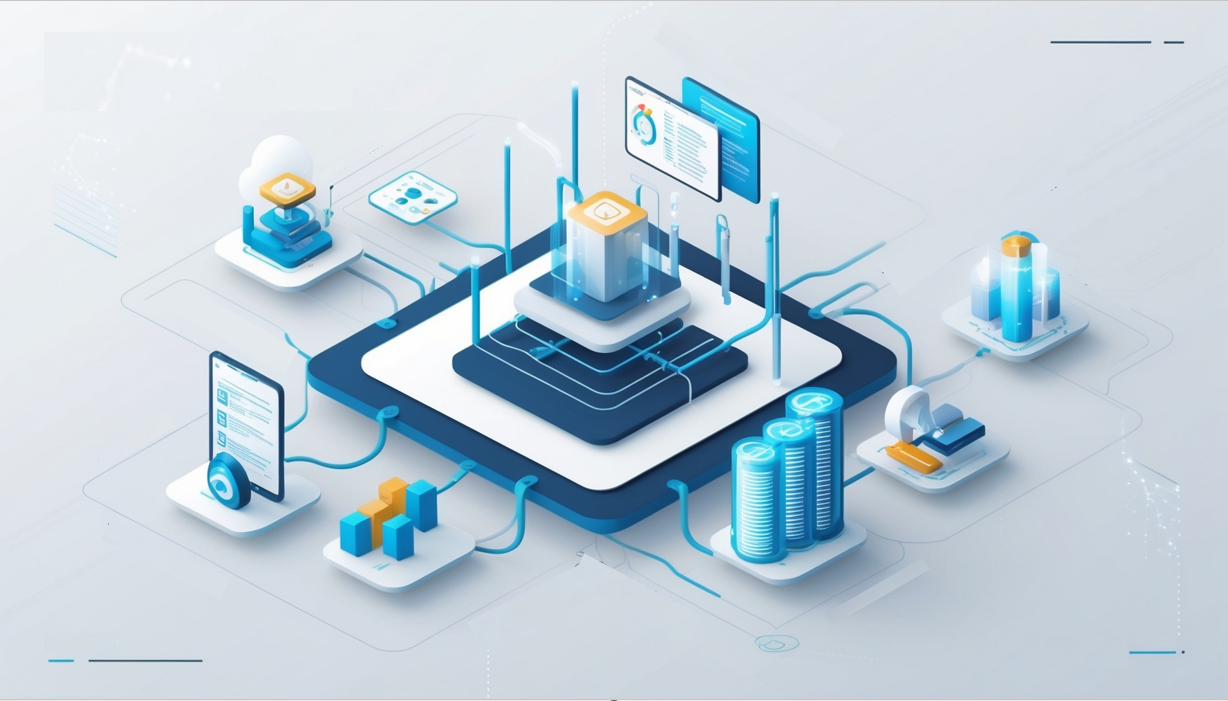This IT Strategic Plan example illustrates the use of IT Governance in support of business IT alignment. CIOs can learn how to align IT with business and use governance processes to deliver on that promise.
In an era where technology has become the backbone of service delivery and organizational efficiency, aligning IT strategies with overarching departmental goals is paramount. This document, rooted in a leading city's efforts to fortify its IT strategy, offers a comprehensive exploration into this alignment process.
The context is established around the current IT landscape, marked by an ever-growing dependence on technology and the simultaneous challenges it poses. In this ever-evolving technological age, not only does the need for advanced tech capabilities rise, but so does the demand for secure, efficient, and timely access to information.
However, with growth comes the challenge. As departments ramp up their technology usage, there's a rising demand for innovative tech solutions that not only enhance service delivery but do so in a fiscally responsible manner. The added complexity of business needs necessitates a more agile and adaptive IT approach. The increasing risks associated with online data, especially migrating to cloud-based solutions, pose significant threats, compelling organizations to shift from an "if" mindset to strategizing for "when" disruptions occur. Coupled with this, the modern-day user’s evolving preferences, like a shift towards lightweight tablet devices and an expectation for more social and mobile applications, keep organizations on their toes.
To intensify the matter further, even as technology becomes a cornerstone, there's an imperative need for technology decisions to uphold guiding principles, ensuring that they not only improve business delivery but also prioritize data security and user needs. The pressure is palpable, especially when considering the insights of pre-eminent experts predicting disruptions to critical infrastructure and a growing dependence on tablet devices.
The solution presented in this document centers around the principles of service alignment and technology governance. By highlighting strategies for IT performance management, resource allocation, and the prioritization of strategic goals and objectives, it provides a roadmap for organizations to chart their course. Furthermore, the CIO’s remarks offer a clear vision, emphasizing the importance of aligning the business application portfolio with ever-changing business and market conditions. Recognizing the shift in IT's role from mere execution to value addition, this document underscores the need for IT professionals to be more than just technical experts—they must be adept at analyzing, interpreting, and adding value to business problems.
This information technology strategic plan example will help you understand:
- What is IT Strategy?
- What are the key elements of business IT alignment?
- How to plan and budget for IT initiatives in support of business IT alignment?
- How to design IT Governance in support of IT Strategy?
In sum, this illuminating document not only pinpoints the challenges IT professionals face in today's demanding environment but also offers actionable insights and strategies, ensuring that IT efforts align seamlessly with departmental objectives and drive toward a future marked by innovation, efficiency, and security.
The provided document offers many insights and strategies that CIOs can leverage to address real-world challenges in the IT domain. Here's how they can harness its content for effective solutions:
- Understanding the Landscape: The document begins by painting a picture of the current technological landscape, highlighting the importance of tech in service delivery. CIOs can use this to ensure they have a realistic understanding of where their organization stands.
- Budgetary Constraints: In an environment of limited tax revenue, prioritizing IT efforts becomes crucial. CIOs can use the example provided to align their strategies with budgetary considerations, ensuring optimal use of available funds.
- Strategic Alignment: The emphasis on aligning IT with departmental goals is a significant takeaway. CIOs can evaluate their IT strategies, ensuring they align with the broader organizational objectives.
- Risk Management: With increasing reliance on online data and cloud solutions, the risk of cyber threats is more prominent than ever. The document's focus on proactive risk management – planning for when, not if, disruptions occur – offers a blueprint for CIOs to bolster their organization's cybersecurity defenses.
- Adapting to Changing User Preferences: The rise of tablet devices and mobile applications indicates a shift in user preferences. CIOs can use these insights to steer their tech strategies, ensuring they're in tune with evolving user demands.
- Emphasis on Data Security: Data security is a recurring theme in the document. By emphasizing secure technological solutions, CIOs can ensure that their strategies prioritize data protection, addressing a critical concern for many organizations.
- Value Addition and Skillset Evolution: The shift from IT merely being execution-focused to a more value-added approach underscores the need for CIOs to ensure their teams possess a blend of technical and business skills. This ensures that IT initiatives not only address technical issues but also deliver tangible business value.
- Service Alignment and Technology Governance: By diving deep into service alignment principles and tech governance, CIOs can craft strategies that ensure IT services align with organizational needs and that there's a robust governance mechanism in place to oversee IT processes.
- Feedback and Collaboration: The CIO's remarks highlight the importance of collaboration between IT and other departments. This serves as a reminder for CIOs to foster inter-departmental collaboration, ensuring that tech solutions address actual business needs.
- Continuous Learning: The references to predictions and insights from a leading advisory company emphasize the importance of staying updated with industry trends. CIOs can adopt a culture of continuous learning within their teams, ensuring they're always ahead of the curve.
In essence, this example provides a comprehensive framework for CIOs to address the multifaceted challenges they face in today's dynamic IT landscape. By adopting its principles, it can craft strategies that are not only technologically sound but also align with broader organizational objectives, ensuring long-term success and innovation.
CIOs can use this example to understand the key elements of a robust business IT alignment program that connects strategy, planning, budgeting, and governance.

